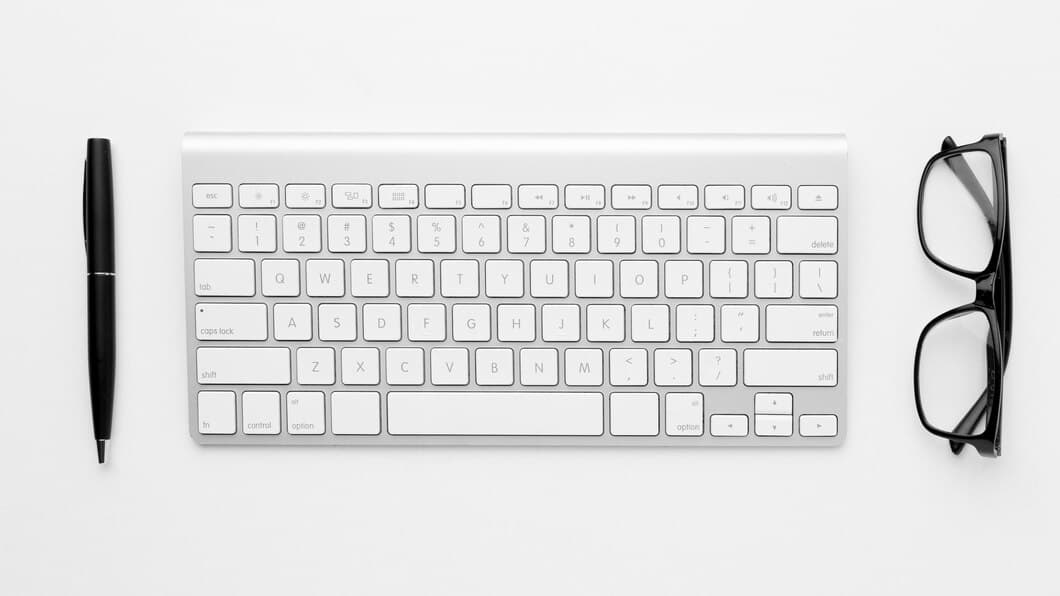How To Disable Laptop Keyboard On MacBook Pro?

This article will provide a step-by-step guide on how to disable the keyboard on a MacBook Pro. The instructions are clear and easy to follow, and the guide is suitable for both beginners and experienced users.
By following the steps outlined in this guide, you can quickly and easily disable the keyboard on your MacBook Pro, allowing you to use an external keyboard or troubleshoot issues with the internal keyboard.
Disconnect external keyboard
To disconnect an external keyboard from your MacBook Pro, you can simply unplug it from the USB port. If the keyboard is connected via Bluetooth, you can disable it by going to the Bluetooth menu in the System Preferences and clicking on the "Disconnect" button.
Once the external keyboard is disconnected, you will only be able to use the built-in keyboard on your MacBook Pro. If you need to reconnect the external keyboard, simply plug it back into the USB port or turn on the Bluetooth connection.
Disconnecting an external keyboard is a simple process that can be done in a few seconds. It is a useful way to troubleshoot problems with your MacBook Pro's built-in keyboard or to simply switch to a different keyboard.
Here are some additional tips for disconnecting an external keyboard from your MacBook Pro:
Kill keyboard process

Use an app to disable the keyboard
For those who prefer to go the app route, there are several options available. One popular choice is KeyboardCleanTool, which is free to download from the Mac App Store. Once installed, you can simply launch the app and click the "Disable Keyboard" button. Your keyboard will then be disabled until you click the "Enable Keyboard" button or quit the app.
Another option is to use a utility like Karabiner-Elements. This open-source app gives you more control over your keyboard, including the ability to disable it. To disable your keyboard using Karabiner-Elements, launch the app and go to the "Complex Modifications" tab. Click the "Add Rule" button and select "Disable Device" from the drop-down menu. In the "Device" field, select your keyboard. Click the "OK" button to save the rule and disable your keyboard.
If you're looking for a more permanent solution, you can disable your keyboard in the macOS System Preferences. To do this, go to the "System Preferences" menu and click on "Keyboard". In the "Keyboard" preferences pane, click on the "Keyboard" tab and uncheck the "Enable Keyboard" checkbox. Your keyboard will then be disabled until you check the "Enable Keyboard" checkbox again.
No matter which method you choose, disabling your keyboard can be a helpful way to prevent accidental key presses or to clean your keyboard without having to worry about pressing any keys.
Change keyboard settings in System Preferences

If you're using a MacBook Pro and want to disable its built-in keyboard for any reason, you can do so in the System Preferences menu. Here's how:
Click on the Apple icon in the menu bar and select "System Preferences."
In the System Preferences window, click on "Keyboard."
In the Keyboard window, click on the "Keyboard" tab. Under the "Input Sources" section, you'll see a list of all the keyboard layouts that are available. Select the keyboard layout that you want to use and uncheck the box next to "Enable keyboard layout."
Restart your Mac
Restarting your Mac can often resolve issues that may be causing your laptop keyboard to malfunction. To restart your Mac, simply click on the Apple menu and select "Restart." Your Mac will then shut down and restart, which may fix the issue.
If restarting your Mac does not resolve the issue, you can try resetting the System Management Controller (SMC). To do this, shut down your Mac and then press and hold the Shift, Control, and Option keys while also pressing the power button. Hold these keys for 10 seconds and then release them. Then, press the power button again to turn your Mac back on.
If resetting the SMC does not resolve the issue, you may need to contact Apple Support for further assistance.
Reset SMC
If a keyboard issue persists after trying the above solutions, you may need to reset the SMC. The SMC is a chip that controls many of the low-level functions of your Mac, including the keyboard. Resetting the SMC can sometimes resolve keyboard issues.
To reset the SMC on a MacBook Pro with a T2 chip, follow these steps:
1. Shut down your Mac.
Reset NVRAM
If the above steps do not resolve the issue, you may need to reset the NVRAM. NVRAM (non-volatile random-access memory) is a small amount of memory that stores certain settings, such as the startup disk, display resolution, and time zone. Resetting the NVRAM can sometimes resolve issues with the keyboard or other hardware devices.
To reset the NVRAM, follow these steps:
Shut down your MacBook Pro.
Run Apple Diagnostics
If you are experiencing issues with your MacBook Pro keyboard, one step you can take is to run Apple Diagnostics. This built-in tool can help you identify any hardware issues that may be causing the problem. To run Apple Diagnostics, follow these steps:
1. Shut down your MacBook Pro.
2. Press and hold the "D" key on your keyboard.
3. Turn on your MacBook Pro while continuing to hold the "D" key.
4. Release the "D" key when you see the Apple Diagnostics screen.
Contact Apple Support
If you've tried all the troubleshooting steps above and your laptop keyboard still isn't working, you may need to contact Apple Support. They can help you diagnose the problem and determine if your keyboard needs to be replaced.
You can contact Apple Support online, by phone, or at an Apple Store. If you contact them online, you'll need to create an Apple ID and sign in. Once you're signed in, you can click on the "Get Support" link at the top of the page.
If you contact them by phone, you'll need to call 1-800-APL-CARE (1-800-275-2273). You can also visit an Apple Store to get help in person.
Frequently Asked Questions
Can I disable the keyboard on my MacBook Pro?
Yes, you can disable the keyboard on your MacBook Pro using the Accessibility features.
How do I disable the keyboard on my MacBook Pro using the Accessibility features?
1) Click on the Apple menu and select "System Preferences".
2) Click on "Accessibility".
3) Select "Keyboard" from the sidebar.
4) Check the box next to "Enable Keyboard Accessibility".
5) Click on the "Keyboard" tab.
6) Uncheck the box next to "Enable full keyboard access".
How do I disable the keyboard on my MacBook Pro using Terminal?
1) Open Terminal.
2) Type the following command: "sudo kextunload -b com.apple.driver.AppleHIDKeyboard"
3) Press Enter.
4) Enter your password when prompted.
5) Restart your Mac.
How do I enable the keyboard on my MacBook Pro?
If you have disabled the keyboard on your MacBook Pro using the Accessibility features, you can enable it by following the steps above and checking the box next to "Enable full keyboard access".
If you have disabled the keyboard on your MacBook Pro using Terminal, you can enable it by typing the following command in Terminal: "sudo kextload -b com.apple.driver.AppleHIDKeyboard"
Press Enter and enter your password when prompted.
To Sum Up
To disable your laptop keyboard on a MacBook Pro, you can either use the System Preferences or a terminal command. To use the System Preferences, click on the Apple menu and select "System Preferences." Then, click on "Keyboard" and uncheck the box next to "Enable Keyboard." To use a terminal command, open the Terminal application and type the following command: "sudo kextunload -b com.apple.driver.AppleHIDKeyboard."
Once you have disabled your laptop keyboard, you can use an external keyboard to type. To reconnect your laptop keyboard, simply restart your computer.




